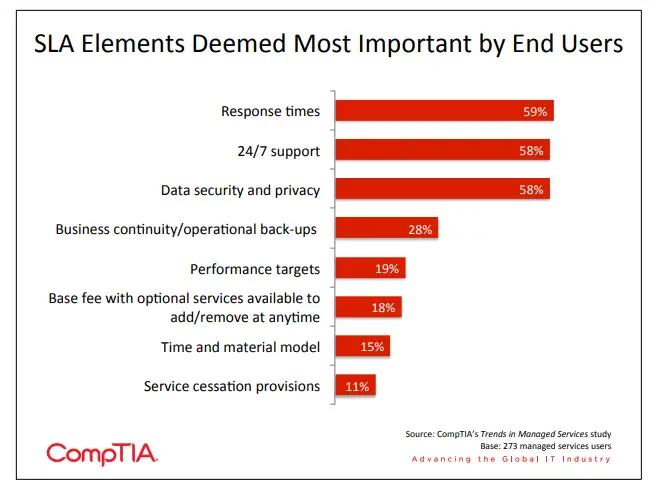
Businesses today face a constant challenge: managing complex IT infrastructures while staying ahead in a competitive market. One stumbling block often encountered is the vast and varied landscape of IT needs, which can drain resources and focus from a company’s core competencies.
This is why understanding the different types of managed services is crucial.
| As David Gracey, Founder & President of Network 1, says, “Managed services provide a solution, allowing businesses to allocate their IT responsibilities to specialized providers.” |
Types of Managed IT Services
1. Managed Networks and Infrastructure
This service involves managing and maintaining a company’s network resources, including hardware like routers, switches, and wireless networks.
Providers ensure that the network is robust, secure, and capable of handling the required data traffic. They also manage VPNs, bandwidth, and other network necessities.
Frustrated with Inconsistent IT Performance?Network 1 Consulting delivers reliable and seamless IT management. |
2. Managed Security
Cybersecurity is a top priority for businesses today. Managed security services include 24/7 monitoring and management of firewalls, intrusion detection systems, and security audits.
Providers offer threat detection, incident response, and regular updates to security infrastructure to protect against the latest threats.
3. Managed Support Services
Also known as helpdesk services, this includes providing businesses access to IT experts to resolve technical problems. This service ensures that employees can get help with IT issues quickly, minimizing downtime and maintaining productivity.
4. Data Backup and Recovery
Every business needs robust systems to back up their critical data and ensure quick recovery in the event of data loss due to hardware failure, human error, or cyber-attacks. Providers typically offer cloud-based solutions for greater flexibility and scalability.
5. Managed Cloud Infrastructure
Managed cloud services include hosting and managing a company’s cloud resources. Providers offer services like cloud storage, computing resources, and cloud security, ensuring businesses can leverage the power of the cloud efficiently and securely.
6. Managed Software-as-a-Service (SaaS)
MSPs can deploy, manage, and maintain software applications on behalf of a company. Providers ensure that software applications are always up-to-date, secure, and performing optimally.
7. Managed Communication Services
Managed communication services ensure businesses have reliable and efficient communication tools, including VoIP (Voice over Internet Protocol), unified communications, and video conferencing systems.
8. Managed Print Services
Responsible for overseeing a company’s entire printing needs, providers manage the supply of consumables, maintain printers, and offer solutions to optimize printing infrastructure and reduce costs.
9. Managed Network Monitoring and Administration
This service includes constant monitoring and management of a business’s network performance. Providers use advanced tools to monitor network traffic, identify bottlenecks, and resolve issues before they impact the business.
10. Managed Compliance and Risk Management
Businesses benefit from having a knowledgeable resource to help it comply with various regulatory standards and manage risks associated with their IT environment. Providers offer compliance audits, risk assessments, and recommendations to ensure that businesses meet the required regulatory standards.
11. Managed IT Assessment and Strategy
IT assessments and strategy formulation involves evaluating a company’s current IT infrastructure and providing strategic recommendations for improvements. It includes assessing the effectiveness of current IT strategies and aligning them with the business’s goals.
| More resources you might like: |
12. Managed Mobile Device Services
As more employees use mobile devices for work, managing these devices becomes crucial. This service manages the devices, security, applications, and data for smartphones and tablets.
13. Managed Infrastructure as a Service (IaaS)
This service provides virtualized computing resources over the internet. Providers manage servers, storage, and networking resources, allowing businesses to scale resources as needed without investing in physical infrastructure.
The Role of Service-Level Agreements in Managed IT Services
Managed IT services often include support services, ensuring that any IT issues are promptly addressed. Service level agreements (SLAs) guarantee the quality and reliability of these services, offering peace of mind to businesses.
In addition to addressing IT issues swiftly, SLAs also set clear expectations for response times and resolution strategies, ensuring that businesses experience minimal downtime.
Furthermore, these agreements often include regular performance reviews and updates, fostering continuous improvement and adaptation of IT services to meet evolving business needs

Source: CompTIA
How to Choose the Right Managed IT Services Provider for Your Business
| Step | Description | Considerations |
| Step 1: Assess Business Needs | Identify the specific IT needs of the business. | Consider company size, industry, and specific IT challenges. |
| Step 2: Set Goals | Define what you want to achieve with managed IT services. | Goals could include improved security, efficiency, or cost savings. |
| Step 3: Research Providers | Look for managed service providers with expertise in desired areas. | Check their experience, reviews, and case studies. |
| Step 4: Evaluate Services | Compare the types of services offered by different providers. | Look at the range of services, technology used, and support levels. |
| Step 5: Consider Scalability | Ensure the services can scale with your business growth. | Services should be flexible to accommodate future needs. |
| Step 6: Review SLAs | Examine service-level agreements for clarity and suitability. | Focus on response times, resolution strategies, and performance. |
| Step 7: Make a Decision | Choose the provider and services that best match your requirements. | Balance cost with the quality and range of services offered. |
| Step 8: Monitor Performance | Regularly review the performance and impact of the services. | Ensure they are meeting set goals and adjust as necessary. |

Transform Your Business IT with Network 1 Consulting
Each type of managed IT service brings distinct advantages, and selecting the appropriate mix can greatly influence your business’s success. These services offer cost-effectiveness and guarantee that your IT setup is state-of-the-art, secure, and operating at peak efficiency.
| Discover Trusted Managed IT Services in Atlanta, Georgia. |
Boasting 25 years of expertise, Network 1 Consulting excels at customizing IT solutions to suit your business requirements.
Want to boost your business’s IT framework? Reach out to us for a free consultation, and discover how its proficiency and committed service can transform your business’s IT landscape.








